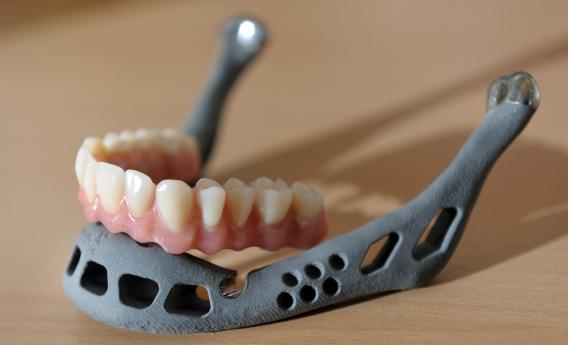3-D printers are not just used for making plastic pirate ships and other toys. Now, doctors are using the technology for custom bone transplants. In June, an 83-year-old Belgain woman received a new titanium lower jaw created by such a printer, marking the first complete lower jaw transplant.
The woman suffered a chronic jawbone infection and was too old for lengthy (and therefore risky) surgery. Using the 3-D printed jawbone made the reconstructive operation go much faster.
The printer used tiny layers of titanium powder fused together to form the personalized implant, which took hours, rather than days (excluding the time it took to design the lower jaw bone). And the surgery took far less time than the average reconstructive operation.
This is not the medical industry’s first foray into 3-D printing. The Royal Hospital for Sick Children in Glasgow partnered with Shapeways to create plastic replicas of bones last year. And researchers are refining a method to use 3-D printers to create blood vessels. But bones are much easier to create than organs.
The implant was printed by LayerWise, a metal manufacturing company, based on research from the Biomedical Research Institute at Hasselt University in Belgium. LayerWise’s medical engineer, Ruben Wauthle, told the BBC, “At the moment we use metal powder for printing. To print organic tissue and bone you would need organic material as your ‘ink’. Technically it could be possible—but there is still a long way to go before we’re there.”
